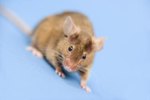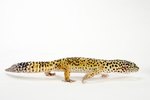
Lots of small animal keepers love the fresh, clean smell of cedar bedding, as well as its ability to mask strong odors. But cedar hides more than the stink of mice droppings and urine. Sound scientific evidence reveals ugly monsters lurking behind the pleasant essence of cedar.
Bad News
Cedar and pine beddings for small animals are softwood shavings. Both give off acids and aromatic hydrocarbons, or phenols, that are toxic to mice. The phenols are powerful enough to repel moths and fleas as well as put plenty of punch in commercial disinfectants. The oils in cedar can result in skin irritations in mice and the acids damage their respiratory tracts. These poisons can also cause liver disease. Exposure to cedar’s toxins can stress the tiny bodies of mice, compromising their immune systems.
Good News
Safe bedding materials for mice include newspaper, hay and shredded paper. Commercial products include beddings made of aspen shavings, paper fibers or grain byproducts such as corncobs. You can keep the cage from stinking by changing the bedding daily.
Three Wise Mice
Even the mice know better than to use cedar. If you put a pile of cedar shavings and a pile of any bedding material other than pine in the cage, your smart little mice will pick the alternative, rejecting the cedar.
References
Resources
Photo Credits
-
Oli Scarff/Getty Images News/Getty Images
Writer Bio
A full-time writer since 2007, Axl J. Amistaadt is a DMS 2013 Outstanding Contributor Award recipient. He publishes online articles with major focus on pets, wildlife, gardening and fitness. He also covers parenting, juvenile science experiments, cooking and alternative/home remedies. Amistaadt has written book reviews for Work At Home Truth.



